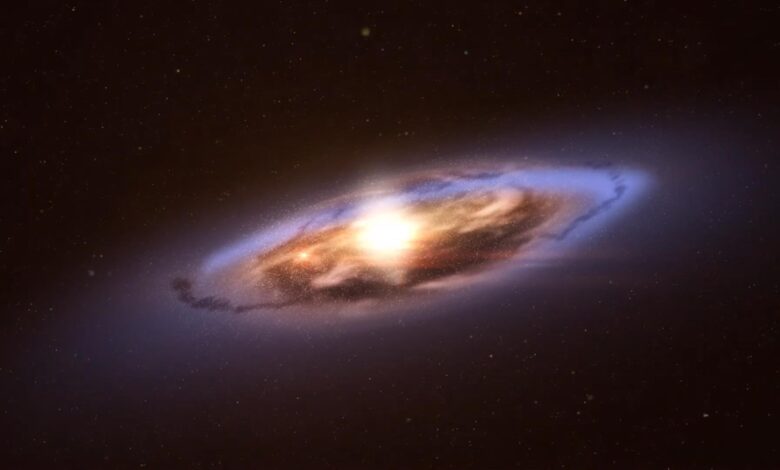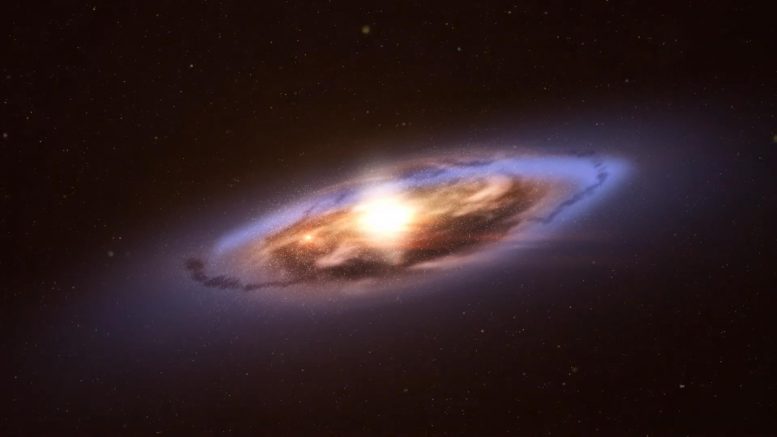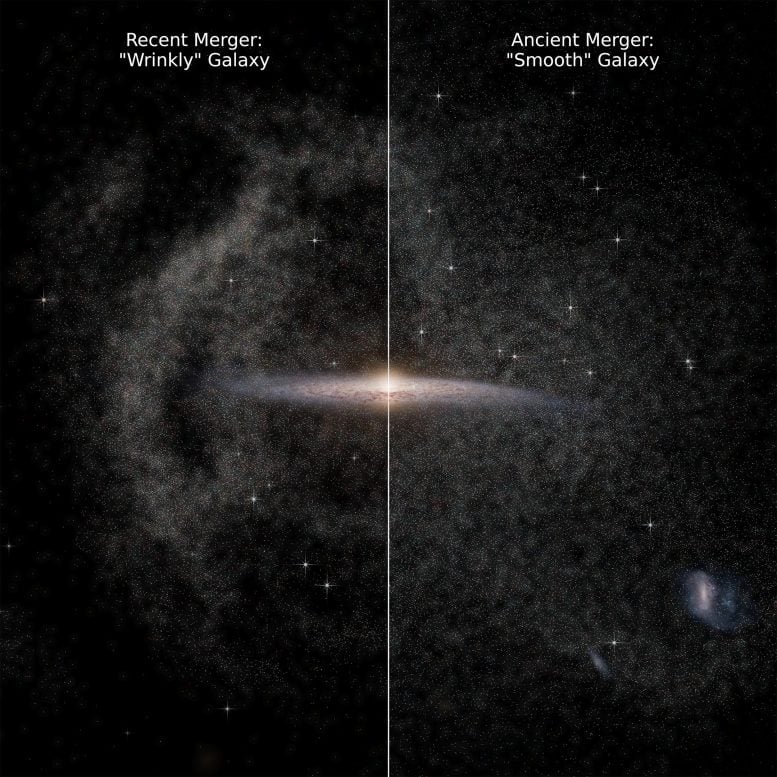Milky Way’s “Wrinkles” Reveal a Startlingly Recent Collision, Shocking Astrophysicists


New research indicates that the most recent major collision in our galaxy occurred billions of years later than previously believed.
Using data from the Gaia spacecraft, researchers found that the Milky Way’s last major galactic collision happened less than three billion years ago, not the eight to 11 billion years previously thought.
Rensselaer Polytechnic Institute’s Heidi Jo Newberg, Ph.D., professor of astronomy; Tom Donlon, Ph.D., a visiting researcher at Rensselaer and a postdoctoral researcher at the University of Alabama; and their team have recently published research that reveals a shocking discovery about the history of our universe: the Milky Way Galaxy’s last major collision occurred billions of years later than previously thought.
The discovery was made possible by the European Space Agency’s Gaia spacecraft, which is mapping more than a billion stars throughout the Milky Way and beyond, tracking their motion, luminosity, temperature, and composition. Newberg, a renowned astrophysicist and Milky Way expert, and Donlon focused on the so-called “wrinkles” in our galaxy, which are formed when other galaxies collide with the Milky Way.
“We get wrinklier as we age, but our work reveals that the opposite is true for the Milky Way. It’s a sort of cosmic Benjamin Button, getting less wrinkly over time,” said Donlon, lead author of the new Gaia study, which also served as his doctoral thesis at Rensselaer. “By looking at how these wrinkles dissipate over time, we can trace when the Milky Way experienced its last big crash – and it turns out this happened billions of years later than we thought.”
A Revised Galactic Timeline
By comparing their observations of the wrinkles with cosmological simulations, the team was able to determine that our last significant collision with another galaxy did not, in fact, occur between eight and 11 billion years ago, as previously believed.

“For the wrinkles of stars to be as obvious as they appear in Gaia data, they must have joined us no less than three billion years ago – at least five billion years later than was previously thought,” said Newberg, Donlon’s thesis adviser at Rensselaer. “New wrinkles of stars form each time the stars swing back and forth through the center of the Milky Way. If they’d joined us eight billion years ago, there would be so many wrinkles right next to each other that we would no longer see them as separate features.”
Implications of the New Findings
The collision is thought to have resulted in a large number of stars with unusual orbits. Previously, scientists dated it at between eight and 11 billion years ago in a collision called the Gaia-Sausage-Enceladus (GSE) merger. Rather, Newberg and Donlon’s findings indicate that the stars may have resulted from the Virgo Radial Merger, which crashed through the center of the Milky Way less than three billion years ago.
“Gaia is a hugely productive mission that’s transforming our view of the cosmos,” says Timo Prusti, Ph.D., Project Scientist for Gaia at the European Space Agency. “Results like this are made possible due to incredible teamwork and collaboration between a huge number of scientists and engineers across Europe and beyond.”
“Through this study, Doctors Newberg and Donlon have made a startling discovery about the history of the Milky Way galaxy,” said Curt Breneman, Ph.D., dean of the School of Science. “Gaia data is offering unprecedented opportunities to better understand our universe, and I am thrilled that Rensselaer researchers were able to harness the power of this incredibly detailed new data.”
Reference: “The debris of the ‘last major merger’ is dynamically young” by Thomas Donlon, Heidi Jo Newberg, Robyn Sanderson, Emily Bregou, Danny Horta, Arpit Arora and Nondh Panithanpaisal, 16 May 2024, Monthly Notices of the Royal Astronomical Society.
DOI: 10.1093/mnras/stae1264
Newberg and Donlon were joined in research by Robyn Sanderson, Ph.D., of the University of Pennsylvania and Flatiron Institute; Emily Bregou, Ph.D., Arpit Arora, Ph.D., and Nondh Panithanpaisal, Ph.D. of the University of Pennsylvania; and Danny Horta, Ph.D., of the Flatiron Institute and the Astrophysics Research Institute.
Source link



